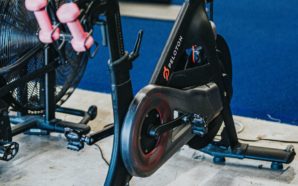
(Photo: blog.ehl.edu)
These people mean business when it comes to caviar
One of the finest food delicacies in the world is caviar, but many don’t know where caviar comes from or the production process behind one of the most expensive foods in the world. The Agroittica Lombarda Group owns the biggest caviar farm in Europe and opens its doors to reveal some of their production secrets.
The Agroittica Lombarda Group is based out of Northern Italy and accounts for 15% of the world’s caviar production. At this facility, they breed sturgeon fish to harvest caviar.
The group is based out of the Lombardy region, split into two companies including Ars Italica Caviar where they farm sturgeon near the city of Cassolnovo and Calvisius Caviar that’s based in Calvisano, where the two companies share the extraction facility.
Both farms reside on 250 acres of land, breeding seven species of sturgeon that produces up to 28 tons of caviar per year. The most expensive caviar they offer is the heavily coveted Beluga that costs $5,700 per kilogram.
The Ars Italica farms four species including Russian sturgeons, starred sturgeons, Adriatic sturgeons, and sterling sturgeons in a rare albino variety for a combined 300,000 sturgeons ranging age from 1 to 20 years. Some of the sturgeons from this farm can reach up to 60 kilos in weight.
The farm is close to a natural reserve called Ticino, the fresh water and clean climate of the natural reserve creates an ideal home for the sturgeon that spend their first years in indoor incubators in well water. When the sturgeons mature, they’re moved to an outdoor water supply that’s fed with resin water.
President of Ars Italica Caviar, Sergio Giovannini, says that the sturgeon biological clock is very long and lasts at least a decade. Ars Italica Caviar has an integrated system that goes from egg to egg, so they have their breeding fish that they choose annually based on what type of sturgeon they need.
The farm waits for the sturgeons to develop eggs, then fertilized eggs become larvae and eventually grow into becoming sturgeons. When the newly developed sturgeons reach the age of 5 years old, the farm is able to split females and males through a technique they use to scan the sturgeons. The farm performs around 25,000 to 35,000 scans every year while separating the females from the males.
Surgeons require 8-20 years to produce their heavily sought-after eggs depending on the species variations. The most popular Beluga caviar takes 20 years to mature and when the fish is ready, they harvest the egg sac containing all the caviar. After extracting the egg sac, the eggs are rubbed over a metal grate to harness all the eggs, then it is rinsed to eliminate any remaining impurities.
Each fish offers a different flavor variety and the eggs from each sturgeon are packed individually. Following the “malossol” recipe, the eggs are salted with less than 3% salt content. When the eggs are packaged, they will need a few months to mature and will be ready to be eaten depending on which breed of sturgeon.
The different types of caviar include Oscietra originating from Russian sturgeon, Sevruga originating from starred sturgeon, and Da Vinci originating from Adriatic sturgeon. Ars Italica Caviar focuses on producing caviar from pure species, believing that pure species have some characteristics that give distinct unique notes to the final product.
The price of each type of caviar varies, in Russian caviar, the eggs are considered more prestigious with bigger and lighter colored eggs. The price of the caviar raises depending on how rare the species is.
The Woman Behind Developing A Flying Car
Boeing Requests $60 Billion Bailout
-
Shareholders have accused Musk of enriching himself to the company’s detriment. In the midst of his ongoing revamp of...
-
Without pandemic-era loan accommodation, borrowers are falling behind. During the height of the COVID-19 pandemic, numerous aid and accommodation...
-
As Twitter changes hands, policies change as well. As of last Friday, social platform Twitter is officially the property...
-
Remote workers have brought in a tidy sum for several major carriers. While the COVID-19 pandemic has reached a...
-
The CPI rose another 0.4% in September. For the past several months, the United States Federal Reserve has been...
-
Musk appears to be backing down from his legal threats. For the last several months, Tesla CEO Elon Musk...
-
Amazon is looking to start the holiday shopping season even earlier this year. Typically, online retail giant Amazon holds...
-
Home Depot still maintains a healthy customer base despite economic concerns. Ongoing concerns of inflation have done a number...
-
A railway strike would severely impact the US economy. This week, representatives of the National Railway Labor Conference and...
-
Customers have been tipping less generously as pandemic restrictions relax. At the height of the COVID-19 pandemic, when many...
-
After years of exclusivity, Peloton is finally allowing third-party sales. Since it first launched as a company, exercise device...
-
Uber was first on the chopping block as SoftBank recoups losses. Recently, Japanese conglomerate SoftBank suffered a major loss...



















